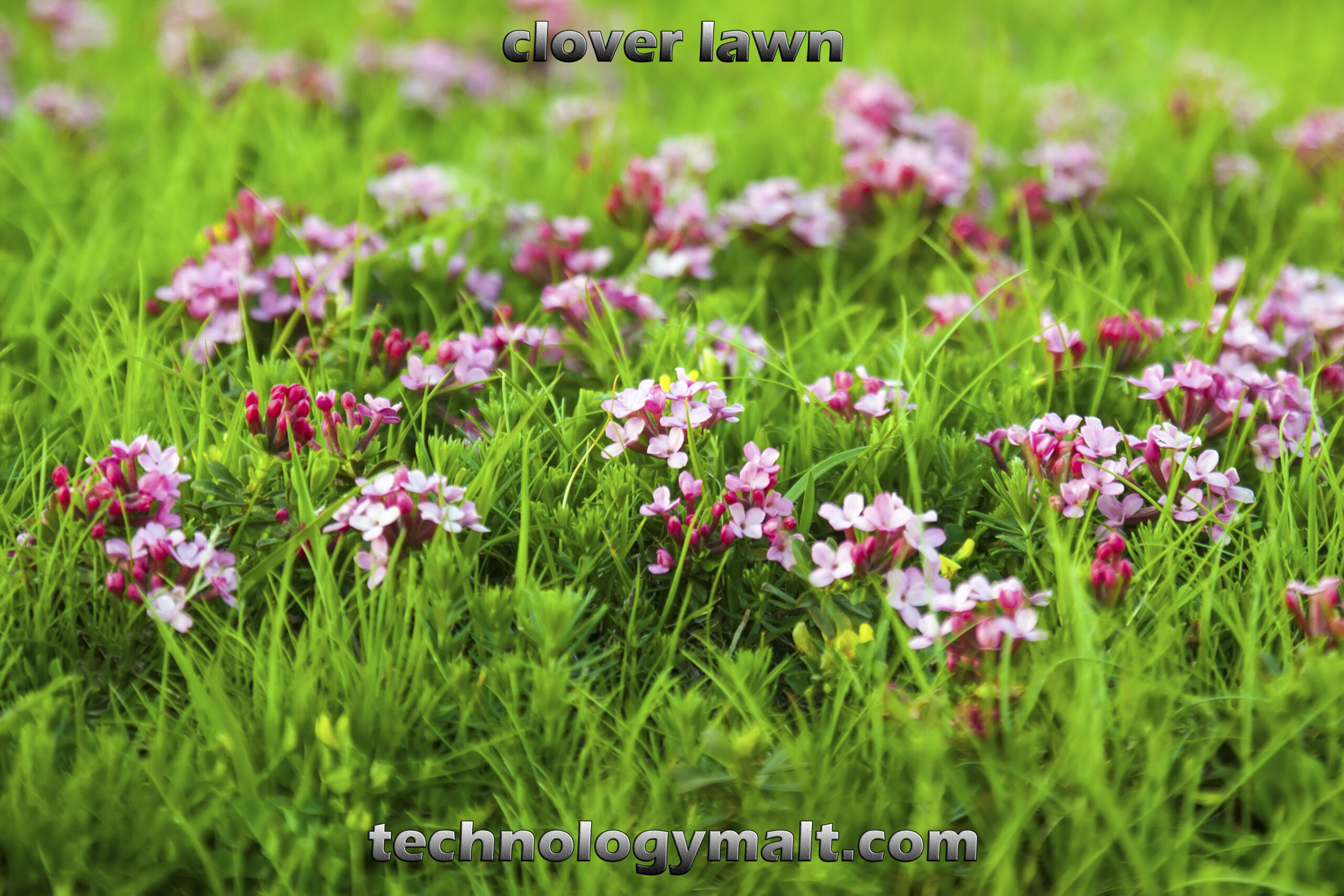A lush, green lawn is often seen as the pinnacle of residential beauty. However, maintaining such a lawn can be both costly and labor-intensive. Recently, clover lawns have emerged as an appealing and practical alternative. This article explores the benefits, challenges, and maintenance of clover lawn , highlighting why they might be the ideal choice for your outdoor space.
What is a Clover Lawn?
Clover lawns are created by replacing traditional grass with clover plants. Although many people think of clover as an undesirable weed, it actually offers numerous advantages. Typically, white clover is used in lawns due to its low-growing habit and rich green color.
In contrast to conventional grass, clover does not require frequent mowing or chemical fertilizers. Additionally, clover thrives in a variety of soil types and light conditions, making it a versatile choice for many homeowners. Furthermore, clover has natural nitrogen-fixing properties that improve soil health. This characteristic reduces the need for synthetic fertilizers, which can be harmful to the environment.
Benefits of Clover Lawns
Low Maintenance Requirements
One of the primary benefits of clover lawns is their low maintenance. Since clover grows slowly and stays low to the ground, you will need to mow less frequently. Moreover, it does not require regular watering, as it is more drought-tolerant compared to traditional grass. Consequently, you can save time and resources while keeping your lawn looking its best.
Natural Fertilization
Clover’s ability to fix nitrogen in the soil is another significant advantage. This process helps enrich the soil naturally, promoting healthier plant growth. As a result, homeowners can avoid using chemical fertilizers, which are both expensive and potentially harmful. This natural fertilization leads to a more sustainable and eco-friendly lawn.
Resistance to Pests and Diseases
Clover is also known for its resistance to pests and diseases. Unlike grass, which can be susceptible to a range of insects and fungal infections, clover remains relatively unaffected. Therefore, you can reduce the need for chemical pesticides and fungicides, contributing further to an environmentally friendly lawn.
Aesthetic Appeal
A well-maintained clover lawn has a unique aesthetic appeal. Its dense, green foliage creates a lush, carpet-like appearance. Additionally, clover plants produce small, white flowers that add a touch of beauty to your lawn. These flowers also attract beneficial insects, such as bees and butterflies, enhancing the overall ecosystem of your garden.
Challenges of Clover Lawns
Potential for Spreading
While clover has many benefits, it does come with some challenges. For instance, its tendency to spread beyond the intended area can be an issue. Clover can quickly establish itself in garden beds or other parts of the yard, requiring some control measures to manage its spread. Regular edging and monitoring can help keep it in check.
Limited Shade Tolerance
Clover generally prefers full sun and may struggle in heavily shaded areas. If your lawn is under dense tree cover or receives limited sunlight, clover may not thrive as well as grass. Therefore, you may need to consider alternative ground covers or enhance sunlight exposure through strategic pruning.
Seasonal Variation
Another consideration is that clover can have seasonal variations in appearance. While it remains green throughout much of the year, it may become less vibrant during extreme heat or cold. This variation can impact the overall look of your lawn, especially if you prefer a consistently uniform appearance.
Establishing a Clover Lawn
Choosing the Right Type of Clover
When establishing a clover lawn, selecting the appropriate type of clover is crucial. White clover is the most commonly used variety due to its low-growing habit and adaptability. However, other types, such as red clover or microclover, might also be suitable depending on your specific needs and preferences.
Preparing the Soil
Proper soil preparation is essential for a successful clover lawn. Begin by clearing the area of any existing grass or weeds. Then, loosen the soil to improve aeration and drainage. Spread clover seeds evenly over the surface, and lightly rake the soil to ensure good seed-to-soil contact. Water gently to promote germination.
Maintenance Tips
Maintaining a clover lawn involves minimal effort compared to traditional grass lawns. Regular mowing is usually not necessary, but occasional trimming can help keep the lawn looking tidy. Water only during extended dry periods, as clover generally withstands drought well. Additionally, monitor for any potential spreading and address shading issues to ensure the health and appearance of your lawn.
Conclusion
Clover lawns offer a practical and aesthetically pleasing alternative to traditional grass. With benefits such as low maintenance, natural fertilization, and resistance to pests, clover is an attractive option for many homeowners. Although there are some challenges, such as potential spreading and limited shade tolerance, careful planning and maintenance can mitigate these issues. By considering clover as an option for your lawn, you can enjoy a beautiful, eco-friendly outdoor space with minimal effort.











